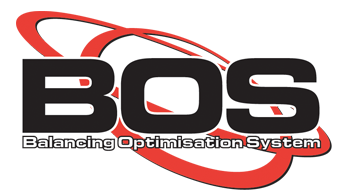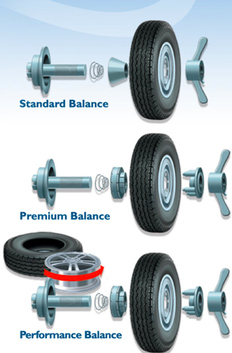
The wheels on your car are designed to be balanced. If they aren’t, the vehicle will have a problem with handling and steering.
The road conditions you drive on are constantly changing, and with it, so do your tyres. Whether you’re a daredevil driver or enjoy a comfortable drive on a smooth highway, your tyres will likely wear unevenly and become unbalanced.
A properly balanced wheel will last longer, improve handling, increase fuel efficiency and reduce wear on other parts of your vehicle.
But how do I know if my tyres need to be balanced? How do wheels get out of balance? What are the symptoms?
In this article, we cover all these questions and more.
What is Wheel Balancing?
Wheel balancing, also known as tyre balancing, removes any unbalanced weight from a wheel and is often done with a wheel balancing machine. The machine then spins the wheel to see if it is balanced when rotating like it would on a vehicle. Your mechanic will then know where to place the weights, and how many to place, to ensure the wheel rotates evenly.
Wheel balancing is an essential part of car maintenance and should not be left to chance or the weather. When all areas of the wheel are balanced properly, the tyre will roll smoothly. This helps it wear evenly and last longer. Balancing also contributes to ride comfort: Imbalanced tires will wobble or hop up and down, which causes vibration.
A properly balanced wheel will also improve handling, increase fuel efficiency and reduce wear on other parts of your vehicle.
Imbalanced tires are easily corrected, but the work is precise and should be done by a professional.
How Do Wheels Get Out of Balance?
Tyres are by no means indestructible. In fact, like most vehicle parts they’re made expertly and fine tuned for optimum performance. Just half an ounce in weight difference is enough to cause a vibration when you’re driving. As such, there are a variety of ways in which they can get out of balance:
- The weather conditions: Cold air can cause tyre deflation due to how the air particles inside the tire contract and deflate. This changes how the tread’s rubber meets the road and if this becomes too extreme, the tyre can reduce to the point that it becomes unbalanced.
- The tyre is damaged: When driving at high speeds and hitting either a speed bump, a sidewalk curb, or a deep pothole, these bumps or holes can cause one or more steel tire belts to break. Consequently, you can quickly lose wheel weight, and your tyre becomes unbalanced.
- The wheel is worn unevenly due to driving conditions: Bumps and potholes can cause the tires to flex more than they would under usual driving conditions. This repeated flexing causes the tire treads to wear out faster than otherwise.
- Driving habits: Most wheels become unbalanced due to handling of the vehicle. For example, if the vehicle is often stopped short (abrupt braked), this can cause flat spots that contribute to weight loss in a small part of the tire.
If you have any questions about how your wheels may need to be adjusted, don't hesitate to get in touch with your local JAX store. We will gladly help you determine if your wheels need to be rebalanced.
What Are the Symptoms of Unbalanced Wheels?
Your vehicle is a well-oiled machine, but it becomes increasingly apparent when parts aren't working the way they should. Here are five symptoms of unbalanced tyres:
- Excessive Vibrations: Even the slightest change of weight on the tyre is enough to create a noticeable vibration, most obviously felt through the steering wheel. As the tyres become increasingly unbalanced, vibrations will increase across the vehicle's entire cabin.
- Steering Problems: All four tyres are needed to exert an even amount of force on the ground through a turn. The more unbalanced your tyre, the harder you'll fight to turn the vehicle.
- Worn Out Suspension and Steering Components: The shocks, springs and other components of your vehicle's steering are put under tremendous stress when the tyres aren't balanced.
- Decreased fuel economy: You may notice a slight drop in fuel consumption as your vehicle has to work harder.
- Tyre Wear: Perhaps the most obvious one, some of your tyres will wear with an unbalanced wheel faster than others.
The Jax BOS Wheel Balance System

Have you ever had a problem with a vibration in your car or through the steering wheel? At JAX Tyres & Auto we know how irritating this can be.
The JAX BOS Balance Optimisation Systems were designed to serve you better. These systems will ensure that you have the smoothest driving possible.
To achieve a smooth vibration free drive, the wheel must be centered and positioned on the balancer just as it will be centered and positioned on your vehicle.
To ensure this, the tyre and wheel are balanced to the machine using a Duo Expert Adaptor & flange plates.

Why have your wheels balanced using the JAX BOS System?

Standard Balance
Tyre and Wheel are mounted to the balancing machine using the rear cone and held by the front wing nut clamp.
Premium Balance
Wheel is centred and positioned on the balancer, as it would be on your vehicle, using a Duo Expert Adapter Et Flange plate to obtain a smooth vibration free drive.
Performance Balance
To achieve optimum performance, we first balance the wheel then match the tyre and wheel to be in their optimum positions. This minimises imbalance. The tyre and wheel unit is then balanced using the Duo Expert Adaptor a Flange plate, ensuring the best in terms of ride comfort and tyre wear.
The benefits offered by the JAX Balance Optimisation System are:
- Extended tyre life
- Improved Driver Comfort
- Less wear on steering and suspension components
- Enhanced vehicle safety
- Reduced driver fatigue
Wheel Alignment vs. Balancing: What's the Difference?
Wheel alignment and balancing are two distinct maintenance procedures that contribute to vehicle performance. Wheel alignment focuses on adjusting the angles at which the wheels make contact with the road, ensuring even tire wear, stable handling, and improved fuel efficiency. On the other hand, wheel balancing addresses uneven weight distribution by adding counterweights to the wheels, reducing vibrations and enhancing ride comfort. While wheel alignment aligns the tires, wheel balancing minimizes vibrations caused by weight imbalances. Regularly scheduling both wheel alignment and balancing services can optimize your vehicle's performance, prolong tire life, and deliver a smoother, safer driving experience.
How Do I Know If My Tyres Need to be Balanced?
So how does this all relate to your vehicle?
It's often apparent when your tyres become unbalanced, as your usually smooth ride starts to exhibit some uncomfortable abnormalities. As soon as you notice any of the following symptoms, see your friendly JAX mechanic get your wheels and tyres checked out and fixed:
- Your steering wheel or entire cabin starts to vibrate
- Uneven tyre wear
- Your consuming fuel faster than normal
- It's becoming increasingly harder to steer
Taking the time to regularly look at your wheels and see how they’re wearing is an excellent way to notice problems before they become more serious. We recommend you get them checked every 10,000 kms. If you are unsure of the requirements in any of these areas, check your vehicle manual or talk to your friendly local JAX's mechanic for recommendations.
The purpose of wheel balancing is to evenly distribute the weight of a tyre and
all other wheel components. This ensures smooth performance and balanced
connection between the tyre and the road.
- Small metal attachments are clamped to the rim of your tyre
- The tyre is tested on a spinning machine
- Each part is tweaked and adjusted until the wheel spins steadily
It’s a fairly delicate process that is best undertaken by a qualified Jax tyre and auto professional. Even the slightest difference in weight distribution can cause handling and performance issues with your car.
Wheel balancing is not to be confused with wheel alignment as they are two completely different processes.
Wheel balancing ensures that the weight of the wheel is evenly distributed for optimal performance and smooth driving.
Wheel alignment involves the adjustment of the angles of your tyres focussing on three different areas:
- Camber: The inward or outward tilt of your tyres when you look front on.
- Toe: The inward or outward angle when you view your tyres from above.
- Caster: The angle of your steering axis when viewed side on.
While some of the symptoms of wheel misalignment and wheel imbalance overlap, they are actually completely different issues with their own unique solution. One tell tale sign that you need a wheel alignment is severe wear and tear on the inside or outer edges of your tyres.
A sign that it’s time for a wheel balance is shaking or vibrating of the steering wheel or in the car seat when driving. It may be particularly noticeable when driving at higher speeds.
But if you suspect that you need either a wheel balance or alignment, it’s best to book straight in with a mechanic. They will be able to properly identify the issue and fix it.
Your car may need a wheel balance if:
- You’ve recently hit a curb, been over a bump or pothole and things haven’t felt quite right since
- You notice shaking in the steering wheel when driving
- Your seat vibrates when driving at higher speeds
- You haven’t driven your car in a while. Flat spots on your tyres can lead to imbalance
If in doubt, book in for a vehicle inspection with your local Jax tyre and auto professional. An expert will be able to spot any issues with wheel balance and fix before any bigger issues arise.
Wheel alignment and wheel balancing are two separate services with a different purpose.
A wheel balance evenly distributes the weight of your wheels for smoother driving.
A wheel alignment ensures that the angles of your tyres are adjusted to their proper settings to ensure even tyre wear and improved performance.
Your mechanic may recommend one or both services and will determine which to do first depending on any other maintenance tasks that also need to be undertaken.

